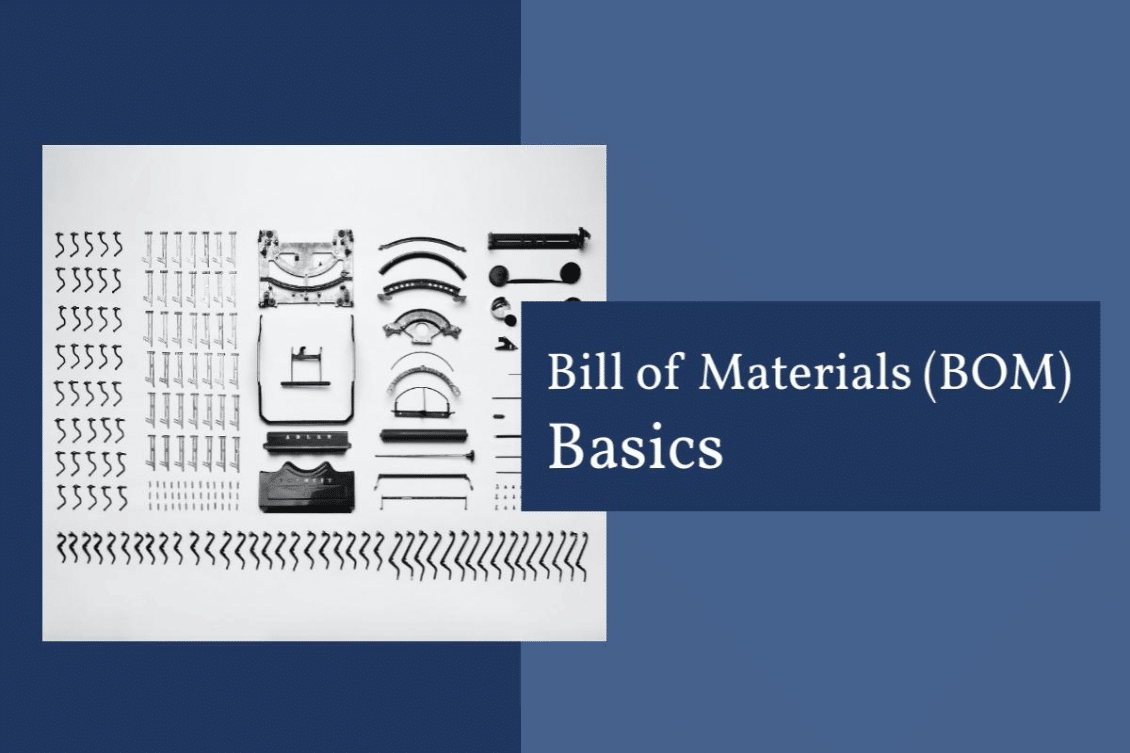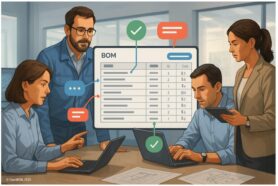
In product development and manufacturing, turning innovative ideas into tangible, market-ready products is a journey filled with complexities and challenges. A part of this journey has to do with the transition of knowledge from you to your contract manufacturer (CM) or your supplier. This transition starts with the Request for Quotation (RFQ) process.
One of the biggest challenges manufacturers face during the RFQ process is compiling all of the documentation required for the supplier to offer you a quote. At the heart of the documentation lays the Bill of Materials (BOM).
The BOM is not just a list of parts that go into your product, it’s the main document that holds the manufacturing knowledge of your product and acts as a reference point to all part data. However, to keep this BOM up-to-date, you need to follow basic BOM management steps.
In this blog, we will explore how the BOM is at the heart of the RFQ process and how it helps you to gain the results you need during the quotation process.
Understanding the RFQ Process
The RFQ process is an important step for most suppliers. The reason for this is that it’s the first opportunity they have to show their value.
Early on during the evaluation process, suppliers are asked a number of questions by the manufacturer and they narrow down their selection. However, the RFQ process is the first time a supplier will have an opportunity to quote a project for the manufacturer.
The RFQ process is an extension of the evaluation process and you are able to grade them on a few extra items that were difficult during the initial talks. These include the following:
- How was their communication?
- Did they offer any technical support?
- Did they quote this in an adequate amount of time?
- Did they provide a detailed quote?
In order to properly evaluate the supplier, you’ll need to include multiple things in the RFQ process. These include the following:
Bill of Materials (BOM)
The BOM is a comprehensive list of all the components and materials needed to manufacture the product. It provides all of the part information needed to procure each part.
Product Specifications
This document describes in detail the product or service that the RFQ pertains to. It includes technical specifications, performance criteria, materials, and any other relevant information that defines what the supplier is expected to deliver.
Quantity Requirements
The RFQ specifies the Minimum Order Quantity (MOQ). This is the number of units that the manufacturer will agree to purchase.
Quality Standards and Testing Requirements
To maintain consistency and quality, RFQs often include quality standards and testing criteria. These standards ensure that the final product meets specific quality benchmarks.
Pricing Information
RFQs include pricing terms and expectations, such as unit costs, Non-Recurring Engineering (NRE) Costs, total project costs, payment terms, and any volume-based discounts. Clear pricing information is essential for both the buyer and supplier to agree on the financial aspects of the project.
Assembly Steps
While the CM will offer support on the assembly steps, providing these steps and a video would allow them to do a quick time study and provide a quick assembly cost. Many manufacturers wait until the last minute to get an assembly quote. This can catch them by surprise.
The Role of the BOM in the RFQ Process
From the supplier’s point of view, the first document that is viewed during the RFQ process will be the BOM. If the BOM is fully completed then the supplier probably has a clear idea of what they need to do. However, if the BOM is incomplete then there will be instant setbacks.
The reason for the importance of the BOM during the RFQ steps is that it holds the power for the supplier to quote any project. The supplier is looking for a single document that they can use to quote your product. This document has all of the basic information, such as materials, Pantone color, texture, quantity, etc… However, it also has references to other important information, such as derivative files (ex. STEP files, PDF, DFX, etc.), quality requirements, and more.
The BOM is usually not a document that is created right before production. If this is what a manufacturer does, then the BOM is often incomplete and missing specific parts.
Ideally, the BOM is updated during each change and is able to track what material and which component was used for each prototype.
Here are five main reasons the BOM is important during the RFQ steps:
Clarity and Precision
A well-organized BOM provides clarity and precision, ensuring that suppliers have a detailed understanding of the product’s requirements.
Accurate Cost Estimation
With a comprehensive BOM, manufacturers can accurately estimate production costs, enabling them to provide competitive pricing in their RFQ submissions.
Sourcing and Supplier Relations
The BOM helps identify the sourcing needs for components and materials, which can aid in supplier negotiations and relationship management.
Risk Assessment
The BOM allows for a thorough analysis of the production process, helping manufacturers identify potential risks and challenges. With this insight, they can proactively address issues, develop contingency plans, and ensure the project stays on track.
Supplier Collaboration
Suppliers rely on the BOM to understand the project’s scope and requirements. A well-organized BOM enhances supplier collaboration by providing clear guidelines for product specifications and expectations, fostering productive partnerships.
What to do Today?
The RFQ process is a vital part of building a relationship with your supplier. The BOM is the most important document during this relationship-building process. So, it must be taken seriously.
OpenBOM is a cloud-based PDM & PLM platform to manage your engineering and manufacturing data. Companies from startups to Fortune 500s use OpenBOM to create a centralized database to bring in, store, and manage their manufacturing data. With this infrastructure, users also use OpenBOM to streamline both their change management and PO processes.
If you need to improve the way you manage your data and processes, share data instantly, or collaborate with contractors and suppliers. contact us today for a free consultation.
Regards,
Jared Haw
Join our newsletter to receive a weekly portion of news, articles, and tips about OpenBOM and our community.











